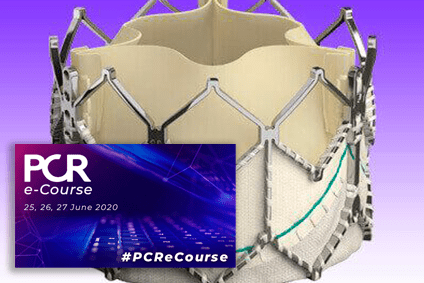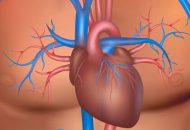The outcomes of this work are important to plan valve replacement with the largest possible prosthesis allowed by patient anatomy in the index procedure. As a worldwide trend, increasingly more patients are receiving bioprostheses, which have improved a lot but still tend to become deteriorated and require a valve-in-valve procedure if the patient is no…
Contained Annulus Rupture after TAVR: What Should We Do?
Courtesy of Dr. Carlos Fava. Aortic annulus rupture is a catastrophic event that presents in nearly 0.9% of cases, but there is another entity called contained annulus rupture, associated to oversized devices and annulus calcification and diagnosed with CT angiography, with up to 5% frequency. 1602 patients from the ENCORE registry were analyzed. 21 of…
Self-Expanding Valve vs. Balloon-Expandable Valve, Randomized, Head to Head
The “arms race”among transcatheter valves has been vertiginous. By the time we received the mid- or long-term outcomes of studies focused on a given valve, we were already using its next generation in clinical practice. As a result, there is little information addressing which valve is the best. Nowadays, this “arms race” has reached a…
Frailty and Bleeding: Impact on Aortic Valve Replacement
Courtesy of Dr. Carlos Fava. We are well aware that both transcatheter aortic valve replacement (TAVR) and surgical valve replacement (SAVR) generate bleeding (15% to 22% for TAVR and 22% to 44% for SAVR). Frail patients constitute a particular group. These have not yet been assessed as to the real risk they run and mortality…
TAVR: Balloon-Expandable or Self-Expanding Valves, Which Is the Answer?
Courtesy of Dr. Carlos Fava. Transcatheter aortic valve replacement (TAVR) has shown benefit and is currently moving towards low-risk patients, as well as bicuspid aortic valves and (to a lower extent) aortic regurgitation. However, we must ponder on which valve should be used on each patient: balloon-expandable (BE) or self-expanding (SE) valve? They represent different technologies…
Should We Finalize TAVR with Atrial Pacing in Some Patients?
Courtesy of Dr. Carlos Fava. The benefits of transcatheter aortic valve replacement (TAVR) are undoubtedly clear, but implantation is performed near the atrioventricular (AV) node, the bundle of His, and the left bundle branch. Consequently, permanent pacemaker implantation (PPI) after TAVR or surgical aortic valve replacement becomes necessary. While researchers have recently developed strategies to reduce…
Webinar SOLACI Research | UP-TO-DATE-TAVE: Evidence, Durability and Challenging Anatomies
We are interested in your opinion. Please, leave your comments, thoughts, questions, etc., below. They will be most welcome.
Malignancies and Aortic Stenosis: Is TAVR Warranted?
This meta-analysis tells us that patients with active malignancies and severe aortic stenosis have a good evolution after transcatheter aortic valve replacement (TAVR), except for a higher rate of pacemaker implantation in the general population. These patients must not be limited to respite care only, at least as far as aortic stenosis is concerned. Short-term…
Aligning Prosthetic Valves to Native Commissures: The Secret to Coronary Artery Obstruction?
Preventing coronary artery obstruction during transcatheter aortic valve replacement (TAVR) continues to be a challenge. There are techniques to prevent (or at least reduce) this from happening, which could be catastrophic. However, they all somehow fall into palliative care, that is, they will merely provide relief, rather than a cure. Commissure overlapping and the resulting…
In Search of the Optimal Depth for Self-Expandable Valves
Despite the use of the different imaging approaches to calculating implantation depth, optimal depth is reached only 30% of the time. Multiple imaging does not offer a uniform perspective and therefore influence reporting. Basically, we do not have a clear idea of what constitutes optimal depth on a case by case basis and, what is…







